Traditionalist Issues
 |
 |
 |
 |
 |
 |
 |
Dialogue Mass - CXX
Progressivists Promote
Anti-Clericalism in the Church
History has shown on a world wide scale that whenever and wherever anti-clericalism arrives on the scene, by its nature it cannot remain peaceful. Priests have always been persecuted by the enemies of the Catholic Faith simply for being priests; now they are being denounced and punished by their own Catholic leaders for being
too Catholic. This is where the term “Clericalism” applies in the context of the “new theology” of Vatican II.
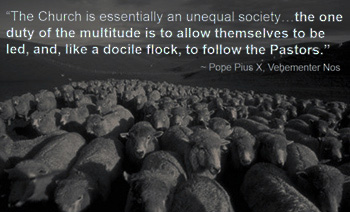 If a priest is declared guilty of “Clericalism” by virtue of his immutable characteristics and fidelity to Tradition, he can never, in the eyes of the progressivists, plead innocence. His adherence to the Catholic Faith as it was formulated at the Council of Trent is enough to damn him in the judgment of the neo-Modernists who have been working to change the essentially sacrificial role of the priest and turn him into one who presides over the assembly.
If a priest is declared guilty of “Clericalism” by virtue of his immutable characteristics and fidelity to Tradition, he can never, in the eyes of the progressivists, plead innocence. His adherence to the Catholic Faith as it was formulated at the Council of Trent is enough to damn him in the judgment of the neo-Modernists who have been working to change the essentially sacrificial role of the priest and turn him into one who presides over the assembly.
Proof of this is amply supplied in the following opinions expressed by prominent members of the Liberal Establishment which display two major features. First, what strikes us in these quotes is that the traditional Catholic priest, i.e. one who opposes the progressive agenda of the reformers, is always singled out for prejudicial treatment – as a “toxic”, “evil”, “destructive”, “sinful”, “misogynist” and “oppressive” influence in the Church.
Second, we cannot fail to notice that the theme of class domination runs through all these accusations like a Marxist leitmotif, leading to calls for structural change in the Church to root out clerical “elitism” and give free rein to the laity. Some examples will illustrate the point.
Fr. Donal O’Sullivan
In 1988, Fr. Donal O’Sullivan, an Irish Spiritan, who was once Assistant to the General Superior of the Holy Ghost Fathers in Africa from 1968-1974, (1) published a tirade against “Clericalism” entitled ‘The Clergy-Laity Problem.’ The main thrust of the article was an attack on the hierarchical structure of the Church, and was expressed in harsh, even vituperative tones, of which this excerpt is an example:
 “The passivity of the laity is the product of the clerical structure of the Church. The laity who are numerically much the greater part of the Church are in fact a minor element in it. Their status is one of dependence on the clergy … The clergy dominate the consciences of the laity … priests who overemphasize the moral law and interpret it rigidly. Priests can cramp people’s moral judgement and violate the autonomy of their consciences.” (2)
“The passivity of the laity is the product of the clerical structure of the Church. The laity who are numerically much the greater part of the Church are in fact a minor element in it. Their status is one of dependence on the clergy … The clergy dominate the consciences of the laity … priests who overemphasize the moral law and interpret it rigidly. Priests can cramp people’s moral judgement and violate the autonomy of their consciences.” (2)
So there we have the catalyst for all Marxist-inspired revolutions: the masses are oppressed by a few power-holders and need to break free from their shackles of dependence. Their “passivity” in this respect is equivalent to Marx’s “opium of the people”.
Fr O’Sullivan was a loyal supporter of Vatican II reforms, particularly its new theology of the Missions. In 2007, he published a book with the revelatory title: Converting the Converter: African Spirituality Inspires an Irish Missionary. (3) In the Introduction, he shows how Vatican II helped him rethink his faith in 1965 when it told missionaries to respect the ancestral religions of those whom they sought to evangelise.
In particular, he deplores the missionary activities of the Holy Ghost Fathers in Nigeria among the Igbo tribe for attempting to instruct them in traditional Catholic doctrine:
“In attempting to teach the Igbos that there was only one God who gave life to all the tribes and nations of the earth, we missionaries altered their faith relationship with that God…it contradicted the core element of their beliefs”. (4)
Like all anti-clerical revolutionaries, Fr O’Sullivan disparaged the priesthood in order to incite outrage and revolt against it. According to the Generalate Register of his Order, he left the Congregation in 2000.
Dr. Paul Lakeland, ex-Jesuit
Dr. Lakeland, of Fairfield University in Connecticut, who left the priesthood to marry, claimed that the Catholic laity are the victims of “structural oppression” (5) caused by collective clericalism operating within the “power pyramid” system.
 He shared the Modernist belief that the “baptismal priesthood is the default position” and the “ministerial priesthood is distinguished by the charism of leadership more than by the power of orders.”
He shared the Modernist belief that the “baptismal priesthood is the default position” and the “ministerial priesthood is distinguished by the charism of leadership more than by the power of orders.”
He believed that any lay person can perform the leadership role of an ordained priest. To make his point more explicit, Lakeland ridiculed the doctrine that an indelible character is conferred on a priest at the moment of ordination, charging that this “theology is not helpful and lies at the heart of the ills of clericalism.” (6)
Fr. Paul Philibert
Fr. Philibert, a noted Dominican theologian and follower of Marie-Dominique Chenu and Yves Congar, wrote that the Church must combat “the clericalizing tendencies of the ministerial elites.” (7) The irony of this statement must not be overlooked. While Vatican II rejected any association with the “Church Militant,” it clearly fostered a combative approach among the reformers to changing institutional structures.
Fr. Thomas Doyle
Fr. Doyle spoke in a similar vein when he mentioned the existence of “a clerical aristocracy” in the Church which, he said, needed to be challenged:
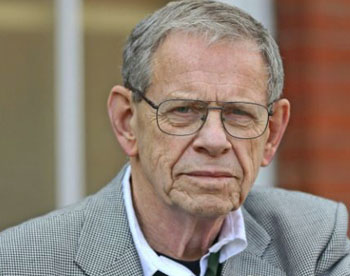 “We all know what clericalism is. It is a disease. It is a virus the Catholic Church has, which means the clergy and the clerical way of life, and its values, come before anything. (8)
“We all know what clericalism is. It is a disease. It is a virus the Catholic Church has, which means the clergy and the clerical way of life, and its values, come before anything. (8)
Fr Doyle achieved public sympathy for his defence of victims of clerical abuse, but his work in this area was a cover for his radical aim to destroy the institutional structures of the Church. His CV (available online) contains the whole panoply of his anti-Catholic activities and shows the Marxist-Leninist nature of his academic dissertations: ‘Vladimir Lenin’s Theory of Social Revolution’ and ‘Liberation Theology in the Context of Social Needs in South America.’
Fr. Doyle also wrote Comrades in Revolution: Christian-Marxist Dialogue, (9) in which he argues for a “revolution from below” against “institutionalized” Christianity.
Fr. Donald Cozzens
Fr. Cozzens, a theology professor at John Carroll University, describes clericalism as “an attitude found in many clergy who put their status as priests and bishops above their status as baptized disciples of Jesus Christ.”
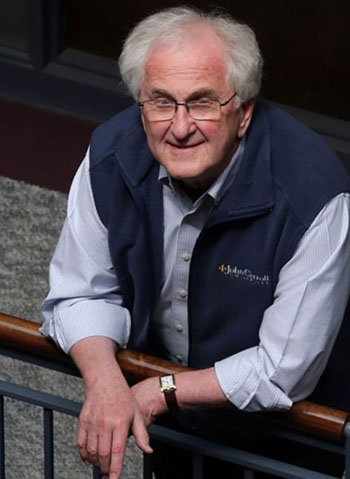 For those who may be puzzled by the meaning of this statement – unheard of before Vatican II – it is a common trope among theological neo-Modernists who prioritize Baptism over Ordination as the source of governing power in the Church.
For those who may be puzzled by the meaning of this statement – unheard of before Vatican II – it is a common trope among theological neo-Modernists who prioritize Baptism over Ordination as the source of governing power in the Church.
Fr Cozzens revealed that his analysis of the priesthood was derived from the “perspective of Freudian and Jungian psychology,” (10) and came to the conclusion that priests who hold their ordination in high regard are psychologically unbalanced:
“In doing so, a sense of privilege and entitlement emerges in their individual and collective psyche. This, in turn, breeds a corps of ecclesiastical elites who think they’re unlike the rest of the faithful.” (11)
But their “privilege and entitlement” are objectively grounded in the powers of the priesthood conferred on them at ordination. Nor is it a matter of inflated ego: The Church has always taught that priests are “essentially different” from the laity, therefore in respect of their ordination they are “unlike the rest of the faithful.”
Fr. Robert Duggan
Fr. Robert Duggan, parish priest and organizer of workshops for liturgy planners, expressed similar sentiments:
“Clericalism is a sin that betrays the unity of the Church intended by Jesus by creating the illusion that priests and people are on two separate levels – with the clergy, of course, being presented as superior to the laity. This lie betrays the true mystery of the Church.” (12)
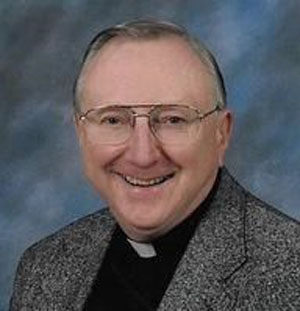 In this passage, Fr Duggan denounces the “unequal” two-tier system mentioned by Pope Pius X as the model for the hierarchical structure of the Church. This was in keeping with Vatican II, and was forcefully echoed by the Pope’s right-hand man, Cardinal Maradiaga, in a speech he delivered in 2013:
In this passage, Fr Duggan denounces the “unequal” two-tier system mentioned by Pope Pius X as the model for the hierarchical structure of the Church. This was in keeping with Vatican II, and was forcefully echoed by the Pope’s right-hand man, Cardinal Maradiaga, in a speech he delivered in 2013:
“Within the people, there is not a dual classification of Christians – laity and clergy, essentially different. The Church as a ‘society of unequals’ disappears: There is, therefore, in Christ and in the Church no inequality (Lumen Gentium 12, 32).” (13)
Let us not overlook the sleight of hand practised by the reformers who replace the traditional classification with another unequal two-tier system in which Baptism is more important than Ordination, lay ministry than the sacramental priesthood. It is none other than the tired old cliché of the “inverted triangle.”
As for that other slogan mentioned by Fr Duggan, the “Mystery of the Church,” we need to keep in mind that this was the title of the first section of Lumen gentium. It has an interesting history, having been used by the progressive reformers during the pre-Vatican II debates on the Constitution of the Church to replace the title of the original schema which was “The Church Militant.”
Continued

Progressivists ridicule the words of Pope St. Pius X
Proof of this is amply supplied in the following opinions expressed by prominent members of the Liberal Establishment which display two major features. First, what strikes us in these quotes is that the traditional Catholic priest, i.e. one who opposes the progressive agenda of the reformers, is always singled out for prejudicial treatment – as a “toxic”, “evil”, “destructive”, “sinful”, “misogynist” and “oppressive” influence in the Church.
Second, we cannot fail to notice that the theme of class domination runs through all these accusations like a Marxist leitmotif, leading to calls for structural change in the Church to root out clerical “elitism” and give free rein to the laity. Some examples will illustrate the point.
Fr. Donal O’Sullivan
In 1988, Fr. Donal O’Sullivan, an Irish Spiritan, who was once Assistant to the General Superior of the Holy Ghost Fathers in Africa from 1968-1974, (1) published a tirade against “Clericalism” entitled ‘The Clergy-Laity Problem.’ The main thrust of the article was an attack on the hierarchical structure of the Church, and was expressed in harsh, even vituperative tones, of which this excerpt is an example:

Fr. O’Sullivan deplores the sound missionary work with the Igbo tribe in Nigeria
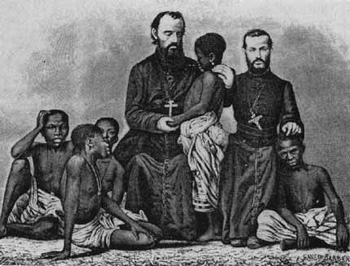
So there we have the catalyst for all Marxist-inspired revolutions: the masses are oppressed by a few power-holders and need to break free from their shackles of dependence. Their “passivity” in this respect is equivalent to Marx’s “opium of the people”.
Fr O’Sullivan was a loyal supporter of Vatican II reforms, particularly its new theology of the Missions. In 2007, he published a book with the revelatory title: Converting the Converter: African Spirituality Inspires an Irish Missionary. (3) In the Introduction, he shows how Vatican II helped him rethink his faith in 1965 when it told missionaries to respect the ancestral religions of those whom they sought to evangelise.
In particular, he deplores the missionary activities of the Holy Ghost Fathers in Nigeria among the Igbo tribe for attempting to instruct them in traditional Catholic doctrine:
“In attempting to teach the Igbos that there was only one God who gave life to all the tribes and nations of the earth, we missionaries altered their faith relationship with that God…it contradicted the core element of their beliefs”. (4)
Like all anti-clerical revolutionaries, Fr O’Sullivan disparaged the priesthood in order to incite outrage and revolt against it. According to the Generalate Register of his Order, he left the Congregation in 2000.
Dr. Paul Lakeland, ex-Jesuit
Dr. Lakeland, of Fairfield University in Connecticut, who left the priesthood to marry, claimed that the Catholic laity are the victims of “structural oppression” (5) caused by collective clericalism operating within the “power pyramid” system.

Ex-Jesuit Lakeland: ‘The baptismal priesthood is the default position’
He believed that any lay person can perform the leadership role of an ordained priest. To make his point more explicit, Lakeland ridiculed the doctrine that an indelible character is conferred on a priest at the moment of ordination, charging that this “theology is not helpful and lies at the heart of the ills of clericalism.” (6)
Fr. Paul Philibert
Fr. Philibert, a noted Dominican theologian and follower of Marie-Dominique Chenu and Yves Congar, wrote that the Church must combat “the clericalizing tendencies of the ministerial elites.” (7) The irony of this statement must not be overlooked. While Vatican II rejected any association with the “Church Militant,” it clearly fostered a combative approach among the reformers to changing institutional structures.
Fr. Thomas Doyle
Fr. Doyle spoke in a similar vein when he mentioned the existence of “a clerical aristocracy” in the Church which, he said, needed to be challenged:

Fr. Doyle: ‘We must challenge
the clerical aristocracy in the Church’
Fr Doyle achieved public sympathy for his defence of victims of clerical abuse, but his work in this area was a cover for his radical aim to destroy the institutional structures of the Church. His CV (available online) contains the whole panoply of his anti-Catholic activities and shows the Marxist-Leninist nature of his academic dissertations: ‘Vladimir Lenin’s Theory of Social Revolution’ and ‘Liberation Theology in the Context of Social Needs in South America.’
Fr. Doyle also wrote Comrades in Revolution: Christian-Marxist Dialogue, (9) in which he argues for a “revolution from below” against “institutionalized” Christianity.
Fr. Donald Cozzens
Fr. Cozzens, a theology professor at John Carroll University, describes clericalism as “an attitude found in many clergy who put their status as priests and bishops above their status as baptized disciples of Jesus Christ.”

Fr. Cozzens accuses priests of mental disturbance due to their sense of ‘privilege & entitlement’
Fr Cozzens revealed that his analysis of the priesthood was derived from the “perspective of Freudian and Jungian psychology,” (10) and came to the conclusion that priests who hold their ordination in high regard are psychologically unbalanced:
“In doing so, a sense of privilege and entitlement emerges in their individual and collective psyche. This, in turn, breeds a corps of ecclesiastical elites who think they’re unlike the rest of the faithful.” (11)
But their “privilege and entitlement” are objectively grounded in the powers of the priesthood conferred on them at ordination. Nor is it a matter of inflated ego: The Church has always taught that priests are “essentially different” from the laity, therefore in respect of their ordination they are “unlike the rest of the faithful.”
Fr. Robert Duggan
Fr. Robert Duggan, parish priest and organizer of workshops for liturgy planners, expressed similar sentiments:
“Clericalism is a sin that betrays the unity of the Church intended by Jesus by creating the illusion that priests and people are on two separate levels – with the clergy, of course, being presented as superior to the laity. This lie betrays the true mystery of the Church.” (12)

Fr. Duggins: The Church as a ‘society of unequals’ must disappear
“Within the people, there is not a dual classification of Christians – laity and clergy, essentially different. The Church as a ‘society of unequals’ disappears: There is, therefore, in Christ and in the Church no inequality (Lumen Gentium 12, 32).” (13)
Let us not overlook the sleight of hand practised by the reformers who replace the traditional classification with another unequal two-tier system in which Baptism is more important than Ordination, lay ministry than the sacramental priesthood. It is none other than the tired old cliché of the “inverted triangle.”
As for that other slogan mentioned by Fr Duggan, the “Mystery of the Church,” we need to keep in mind that this was the title of the first section of Lumen gentium. It has an interesting history, having been used by the progressive reformers during the pre-Vatican II debates on the Constitution of the Church to replace the title of the original schema which was “The Church Militant.”
Continued
- The Superior General was Fr Joseph Lécuyer who was elected in 1968.
- D. Vincent O’Sullivan CSSp, ‘The Clergy-Laity Problem,’ The Furrow, Vol. 39, No. 1, January 1988, p. 33
- Dublin: Pigeonhouse Books, 2007
- Ibid., p. 6
- Paul Lakeland, The Liberation of the Laity: In Search of an Accountable Church, New York: Continuum, 2003, p. 194
- Paul Lakeland, ‘What might ‘Praedicate Evangelium’ have started?’ Commonweal, 6 May 2022
- Paul Philibert OP, The Priesthood of the Faithful: Key to a Living Church, Liturgical Press, 2005, p. 16
- Sarah Mac Donald, ‘Canon lawyer 'terrified' by young conservative seminarians’, The Tablet, 3 February 2022
- Dayton: Pflaume Press, 1969
- Donald Cozzens, The Changing Face of the Priesthood, Collegeville, Liturgical Press, 2000, p. vii
- Donald Cozzens, ‘Don’t Put Priests on a Pedestal’, US Catholic, October 2015, 33–35
- Fr Robert D. Duggan, ‘From Your Pastor’, (Letter of 6 June 2002 to the parishioners of St. Rose of Lima Parish in Gaithersburg, Maryland), In the Vineyard, July 2004, Vol. 3, Issue 7
- Cardinal Óscar Andrés Rodríguez Maradiaga SDB, Archbishop of Tegucigalpa, from his speech given at the University of Dallas Ministry Conference on 25 October 2013
Posted October 17, 2022
______________________
______________________
 Volume I |
 Volume II |
 Volume III |
 Volume IV |
 Volume V |
 Volume VI |
 Volume VII |
 Volume VIII |
 Volume IX |
 Volume X |
 Volume XI |
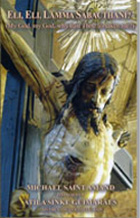 Special Edition |